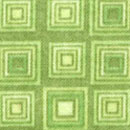Q: How am I present with others in my community when they are experiencing challenges?
We are on this life journey together. Any of us, at any time may find ourselves relying on others. In fact, we truly cannot exist without one another, regardless of our strength. Yet it is usually hard for us to accept that we need help, especially when it is likely that our need for care will increase as time goes by. . Or, we may find ourselves caring for a friend or family member. We want to be supportive but may not know how, or we are afraid of being overly intrusive.
Family, friends, colleagues, and all the significant people in a person’s life are potential partners with that person on the journey through illness, disability, memory loss or other changes that may come along. Caregivers need to be supported in their needs along with the person facing new or chronic challenges. The more each of us understand and learn, the better we will be able to navigate the journey together. Though we cannot all be experts in the many areas of need that may face us in a lifetime, we can practice being present for one another in love and compassion in any circumstances. The process can be one of deepening and growing in love as each person’s needs and values are considered, and each offers their strengths and unique perspective.
“The remarkable discovery we can make is that love has not deserted us, and that it is available to us now in a new way.”
Margaret Torrie, 1975, PYM Faith and Practice 2002
James E. Miller and Susan Cutshall, in The Art of Being a Healing Presence, developed seven simple steps for people accompanying a person through illness or other care needs. This is a highly recommended book for anyone who is or may be in the role of a caregiver, as family, friend, or member of the spiritual community. Linuponivil . Below is a Quaker adaptation and summary of those steps.
Quaker ABC’s of Healing Presence*
- Allow Opening — to your experiences, vulnerabilities, and fears. Consider your own life story and accept how this has influenced your unique spirit; extend to yourself the compassion you wish to extend to others.
- Be Intentional — in your decision to be a healing presence. Be patient with your fallibility.
- Clear — yourself of other obstacles and concerns. At least, for the moments you are together with the person in your care, be present, make space for calm.
- Discover the Light— within the individual you are with, respect their innate capacity for healing. Appreciate who they are, as they are, in this moment.
- Extend your Gifts — openly and simply. Know it is up to the other person to accept them. Offer empathy, dependability, unselfish focus, love and acceptance.
- Freely Receive — what this person, this experience, has to offer, and be grateful.
- Grace and Balance — know that setting realistic limits on what you can do will allow you to be a more open presence for others. Accept that you are also a person with needs.
*Adapted from James E. Miller and Susan Cutshall, “Steps to Being a Healing Presence,” The Art of Being a Healing Presence, pages 74-75,Willowgreen Publishing, Fort Wayne, Indiana, 2001.
Download this article in pamphlet form
LINKS TO MORE INFORMATION: Click on the blue text below to be directed to outside websites that offer additional information on this topic. Articles from this site will open in the same browser window/tab. Articles from other websites will open in a new window; when you are done, simply click out of that window and you will be back on this site.
More articles on this website:
Role of the Spiritual Community in Care
Spiritual Approach to Dementia Care
Vigiling: Being with a Dying Person
Other articles/links:
Jame’s Miller’s book and other resources from Willowgreen Press
“Compassion strengthens your outlook, and with that courage you are more relaxed.”
Dalai Lama, Mind of Clear Light



